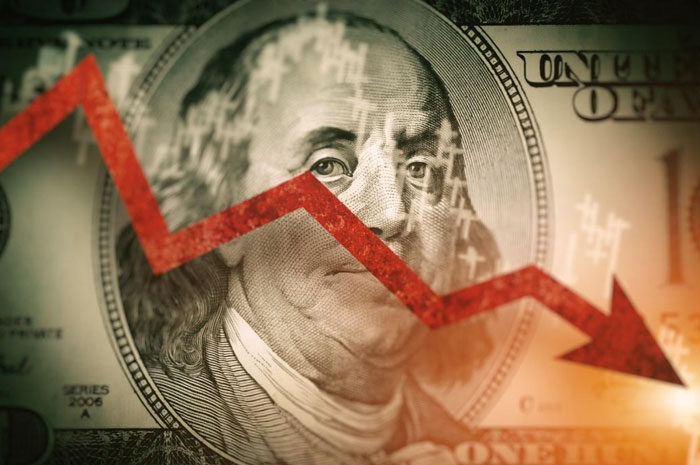“US Recession Probability Reaches 96 Percent Heading into Q4”
The Conference Board1
Is A Recession Coming?
While a recession has not been officially declared, the US GDP shows spending has slowed and prices have increased. Many national experts now say a recession could happen sometime in 2023.
What Is a Recession?
A recession is defined as two consecutive quarters of negative growth meaning the average U.S. consumer is spending less.
When demand peaks, then starts to decline. Excessive supply of goods and services aren’t consumed, companies produce less and downsize. The end result is people lose purchasing power causing a downturn in consumption. This is the recipe for recession:
Triggering Factors
There are many factors which need to a recession:
- Inflation
- The Fed raising interest rates
- Russia and Ukraine conflict
- Still suffering from the bottleneck of the COVID pandemic
- Mounting Student loan debt
The chances of a recession ticked higher last week, driven by the Federal Reserve’s latest rate hike and hawkish forward guidance.
How bad could the next recession be?
However, Morgan Stanly feels that this recession won’t be as severe as the Great Financial Crisis of 2007-2008:
Some Aside from the pandemic-induced 2020 recession, other recent recessions have been credit-driven, including the Great Financial Crisis of 2007-2008 and the dot-com bust of 2000-2001. In those cases, debt-related excesses built up in housing and internet infrastructure, and it took nearly a decade for the economy to absorb them.
By contrast, excess liquidity, not debt, is the most likely catalyst for a recession today. In this case, extreme levels of COVID-related fiscal and monetary stimulus pumped money into households and investment markets, contributing to inflation and driving speculation in financial assets.
The difference is important for investors. Historically, damage to corporate earnings tends to be more modest during inflation-driven recessions. For example, during the inflation-driven recessions of both 1982-1983, when the Fed raised its policy rate to 20%, and 1973-1974, when the rate reached 11%, S&P 500 profits fell 14% and 15%, respectively. This compares with profit declines of 57% during the Great Financial Crisis and 32% during the tech crash.
What Can You Do to Prepare?
Know where you are with your money. Budget. Cut costs where you can.
If all else fails, bankruptcy is a fresh financial start for people who just need a do-over. We can save your home, your retirement accounts, in many cases, all of your other assets while we wipe out your credit card and your other debt.
1The Conference Board is the global, nonprofit think tank and business membership organization that delivers Trusted Insights for What’s Ahead™. For over 100 years, our cutting-edge research, data, events and executive networks have helped the world’s leading companies understand the present and shape the future.
Related Articles:
https://www.morganstanley.com/ideas/recession-2022-potential-how-bad
https://www.forbes.com/advisor/investing/are-we-in-a-recession/
https://time.com/6201205/what-is-a-recession-2022/
https://www.cnn.com/2022/10/02/business/global-recession-fears-explained
https://www.cnbc.com/2022/07/20/economists-chance-of-a-2022-recession-is-rising-with-inflation.html



